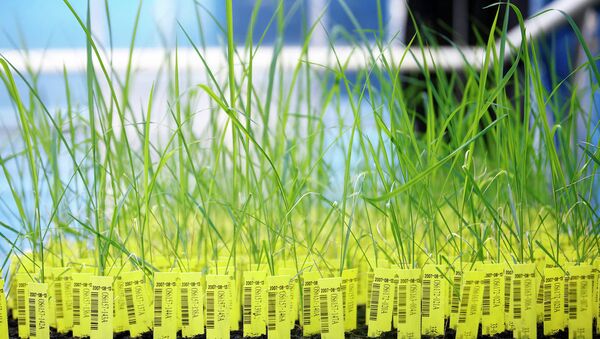Let's take a look at the bigger picture. Scientists have learned to manipulate the genetic make-up of plants, animals, humans even. Careful procedures resulted in either lab-produced specimens or their progeny, some of which were introduced to the world, although, in generally controlled environments – fields have genetically modified crops, farms have genetically modified livestock and some aquariums have genetically modified fish capable of glowing in the dark. But some propose we take genetic engineering to a whole new level – a level which can affect the whole world.
Gene drive aims to change entire populations of particular species by stimulating inheritance of particular genes, such that specimens with altered genomes would eventually replace the original population. Professor Sheldon Krimsky of Tufts University, Chairman of the Board of the Council for Responsible Genetics, explains the reasoning behind gene drive.
For many years there's been ideas about transforming biological systems. This we can do, of course, with GMOs, but the idea of transforming nature by creating a competitive organism that would wipe out the natural organism, such as making mosquitoes that would not be able to carry malaria – that's been on the books for a long time.
Interestingly, this is not only just about humans. Doctor Jennifer Kuzma, co-director of the Genetic Engineering in Society Center at North Carolina State University notes:
There are also ecological benefits. For example, birds on the Hawaiian Islands in the United States are disappearing because of avian malaria (bird malaria). So the idea here would be to put a gene drive system to decrease the mosquito population that carries the malaria and then protect the bird species.
While the idea is understandable, the science is not quite there yet. There has been one study, published earlier this year, which noted that genetically modified mosquitoes could be used to combat dengue. 4.2 million genetically modified male mosquitoes were released into the wild, which led to a 93% reduction in the population of the disease-carrying mosquitoes. Although this was heralded as a success, there are still concerns. Professor Krimsky notes:
None of proteins that they use in the GMOs that I'm aware of can actually have a global environmental effect. But with insects, with mosquitoes, if you transform them biologically, you could get unexpected outcomes that would literally be unpredictable. I think that's what people are worried about.
Other potential problems include unexpected mutations during the gene drive process, modified specimens spreading the effect across a greater than planned area, unexpected effects of modified specimens on humans and, on the grand scale, unexpected ecological impacts which cannot be forecast before the drive. In other words, it's a lot of questions with answers mostly being theoretical at this point. Other potential applications may also include more complex organisms, even mammals and humans. However, due to the long lifespan, the effect of the gene drive could only be achieved and evaluated decades, if not centuries, later. Who knows, perhaps eventually we will be able to plan gene drives as means of altering the ecosystem so far ahead, while maintaining controlled results.

